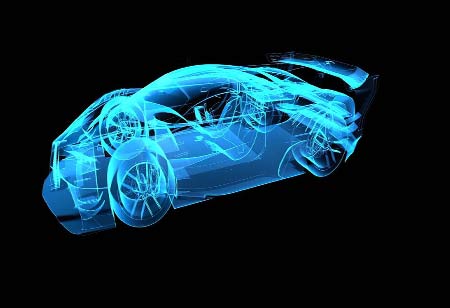THANK YOU FOR SUBSCRIBING
THANK YOU FOR SUBSCRIBING
Be first to read the latest tech news, Industry Leader's Insights, and CIO interviews of medium and large enterprises exclusively from Auto Tech Outlook

By
Auto Tech Outlook | Wednesday, May 31, 2023
Stay ahead of the industry with exclusive feature stories on the top companies, expert insights and the latest news delivered straight to your inbox. Subscribe today.
AI has played a very significant role in numerous industries. It has allowed decision-makers to use technologies in planning and managing integrated transport systems as well.
FREMONT, CA: The goal of the global net-zero transition is often represented by large solar-power plants, large-scale wind farms, and afforestation on a huge scale. While these aspects are important for sustainability, the investors also need to focus on capital-intensive with lengthy timeframes, which makes it beyond grasp for numerous developing nations in the Global South.
There comes the paradox for developing countries, the required transformation of the economies in line with sustainability, without disturbing growth. This is especially prevalent in Southeast Asia. Using technology to modernise present infrastructures and sectors, makes them more efficient and resilient, while also presenting a realistic solution to reduce emissions and important economic opportunities. This potential is most prominent in the mobility sector.
Across the world, emissions that are transport-related contribute to a quarter of all greenhouse gas emissions (GHG). This problem is very eminent in Southeast Asia. Numerous urban centres have millions of families using old, polluting vehicles, and these regions have some of the worst congestion in the world. Furthermore, the rise of urbanisation is only making the highly polluted environments worse, and six out of the ten cities with the worst quality of air are from Southeast Asia.
Can This Problem Be Mitigated from an Environmental and Economic Perspective?
Numerous leaders present in the private and public sectors have recognised that the resolution of this challenge is not just related to the environmental, but also the economic perspective. The consequences of air pollution are extreme health effects, which impact the future feasibility of a workforce, and the time people spend getting through congestion negatively impacts a region’s productivity and therefore, hurts its economic prospects. Studies related to the same report show that these regions lose approximately two to five per cent of GDP each year due to heavy traffic.
When people picture the modernisation of mobility, more often than not, they generally think of electric vehicles (EVs). However, while EVs are essential for sustainability and have their place, many other innovative solutions are present. In the past few years, many cities and countries in Southeast Asia have applied these solutions.
The Role of AI
AI has played a very significant role in numerous industries. It has allowed decision-makers to use technologies in planning and managing integrated transport systems. A suitable example is Singapore. It is employing such technology to mitigate the ‘last kilometre’ connectivity issue, ascertaining that the future commute should take, at most, 20 minutes for all citizens and for around 80 per cent of all households to live within a 10-minute walk from a train station. The implementation of AI-based urban mobility solutions is evolving the methods by which people use transportation in Southeast Asia. AI-based solutions are being employed rapidly across the region.
 Copyright © 2025 AutoTech Outlook. All Rights Reserved | Privacy Policy | Subscribe | Sitemap | About us | Feedback Policy | Editorial Policy
Copyright © 2025 AutoTech Outlook. All Rights Reserved | Privacy Policy | Subscribe | Sitemap | About us | Feedback Policy | Editorial Policy 



